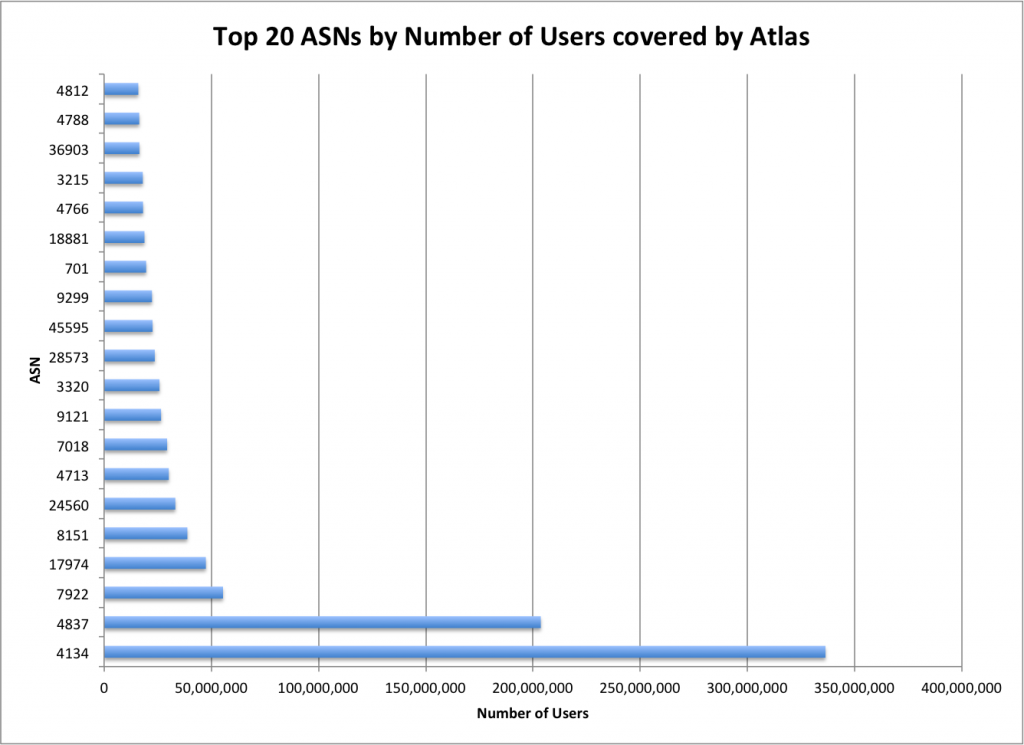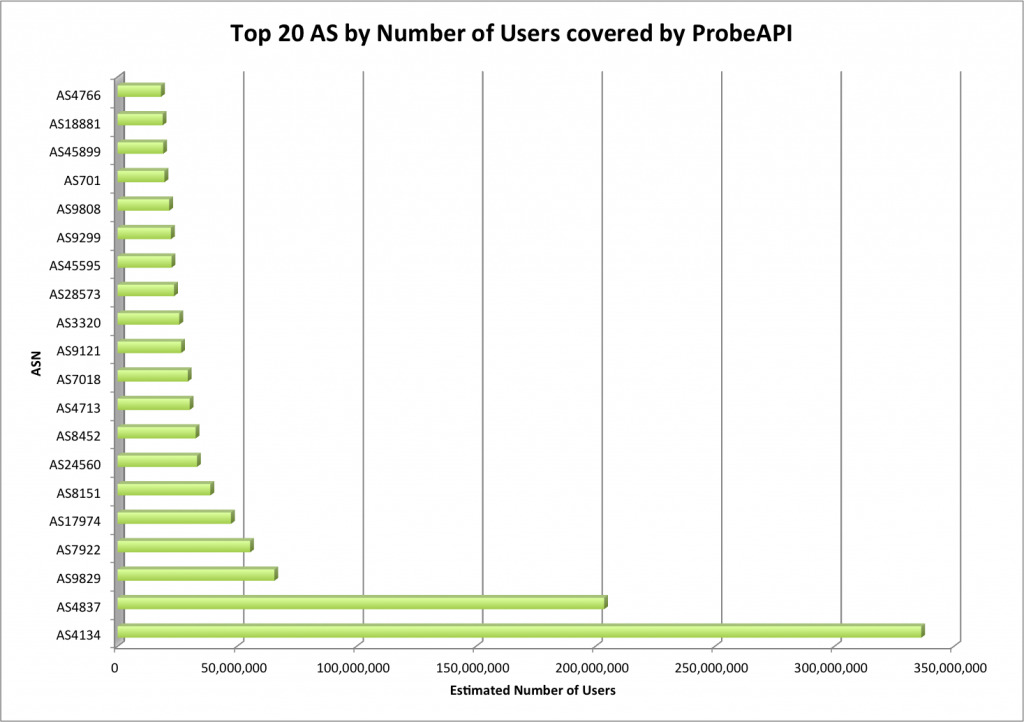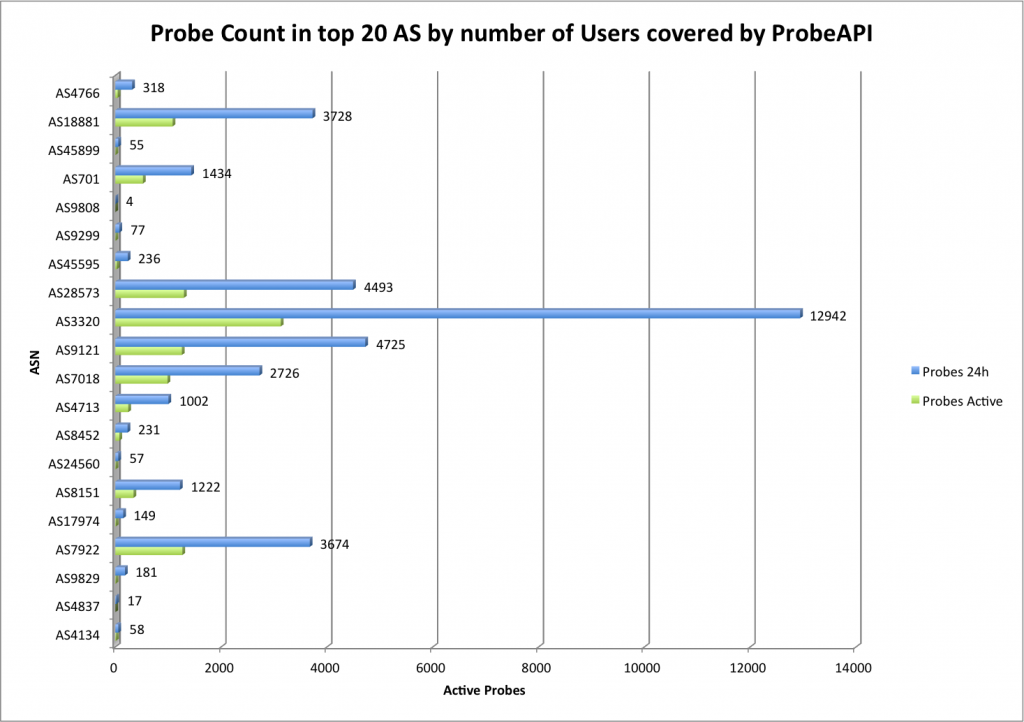Ripe Atlas has been successful in establishing a fairly well extended network of measurement Probes. They are placed in different environments, which can be server rooms, volunteers ‘offices, universities and households. Since the placement of a probe requires a physical device to be installed, the deployment and growth rate of the network is limited to the available physical distribution capacities and the cost of producing enough physical devices. On the flip side, this quality of being a hardware based measuring platform, not only guarantees a stable availability of the probes, but also there is a genuine piece of hardware that allows any customizations the measurements may require.
Although Atlas has already achieved an impressive number of deployed probes, there are still large networks in need of coverage.
| ASN | Country(ISO 2 letter code) | Users(APNIC Labs estimate) | RIPE Atlas probes(online) |
| AS4134 | CN | 336 million | 2 |
| AS4837 | CN | 204 million | 0 |
| AS9829 | IN | 66 million | 0 |
| AS7922 | US | 55 million | 336 |
| AS17974 | ID | 47 million | 1 |
| AS8151 | MX | 39 million | 4 |
| AS24560 | IN | 33 million | 5 |
| AS8452 | EG | 33 million | 0 |
| AS4713 | JP | 30 million | 8 |
| AS7018 | US | 29 million | 40 |
| AS9121 | TR | 27 million | 8 |
| AS3320 | DE | 26 million | 206 |
| AS28573 | BR | 24 million | 20 |
| AS45595 | PK | 23 million | 1 |
| AS9299 | PH | 22 million | 5 |
| AS9808 | CN | 21 million | 0 |
| AS701 | US | 20 million | 80 |
| AS45899 | VN | 19 million | 1 |
| AS18881 | BR | 19 million | 8 |
| AS4766 | KR | 18 million | 8 |
-
Source: https://labs.ripe.net/Members/emileaben/improving-ripe-atlas-coverage-what-networks-are-missing
In this respect ProbeAPI can provide much relief. Because of its software-based nature, it has many complementary features that provide very interesting strategic flexibilities. For example, its deployment has a very low cost: it only requires the installation of a piece of software on a Windows computer. Being able to measure real user’s connectivity is a big advantage, but at the same time the normal usage of computers make ProbeAPI instances very volatile: personal computers go on and offline for different reasons during their normal usage.
We can note by observing both graphs, that there are still large networks with little coverage from ProbeAPI. ASNs 4134 (China Telecom), 4837 (China-168) and 9829 (India Telecom) are good examples of large networks with a comparatively small number of probes.
Nevertheless, ProbeAPI’s easy deployment gives us the possibility to be present in networks where too little or no physical probes have been installed.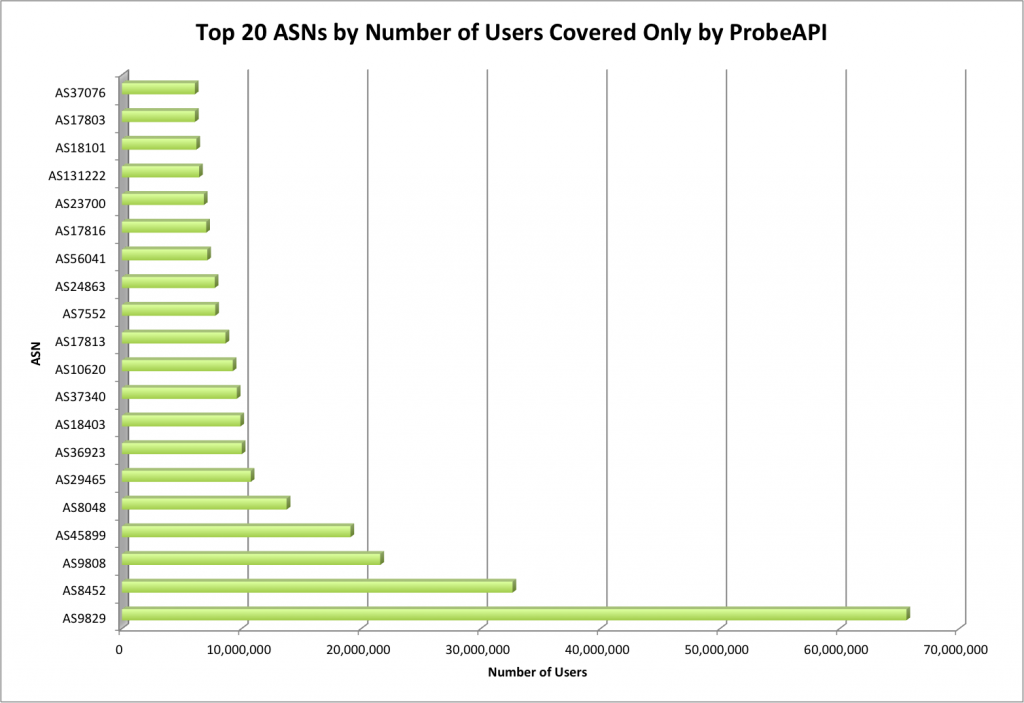
 In our measurements, the number of available probes in ProbeAPI at a given moment is around 84000. During a normal usage day, more than 290000 became online. Although not all probes are online all the time, the number of available probes at a given moment is almost 8 times RIPE Atlas’ active probe count. This counterweighs the volatility problem of ProbeAPI’s instances, but for longer measurements from a static set of probes, the stability of Atlas Probes is an important fact to take into account.
In our measurements, the number of available probes in ProbeAPI at a given moment is around 84000. During a normal usage day, more than 290000 became online. Although not all probes are online all the time, the number of available probes at a given moment is almost 8 times RIPE Atlas’ active probe count. This counterweighs the volatility problem of ProbeAPI’s instances, but for longer measurements from a static set of probes, the stability of Atlas Probes is an important fact to take into account.
It is important to remark that this comparison does not intend to establish technical superiority of one system or the other. Quite at the contrary, during this analysis we realized that in this respect, Atlas and ProbeAPI may contribute complementary features for measuring networks. For low-coverage, physically or politically hard to reach networks, a software solution like ProbeAPI may be a viable alternative in order to be able to first expand our general measurement coverage. Once a region starts installing more Atlas probes, longer measurements with fixed sets of probes become available thanks to Atlas’ more stable probes.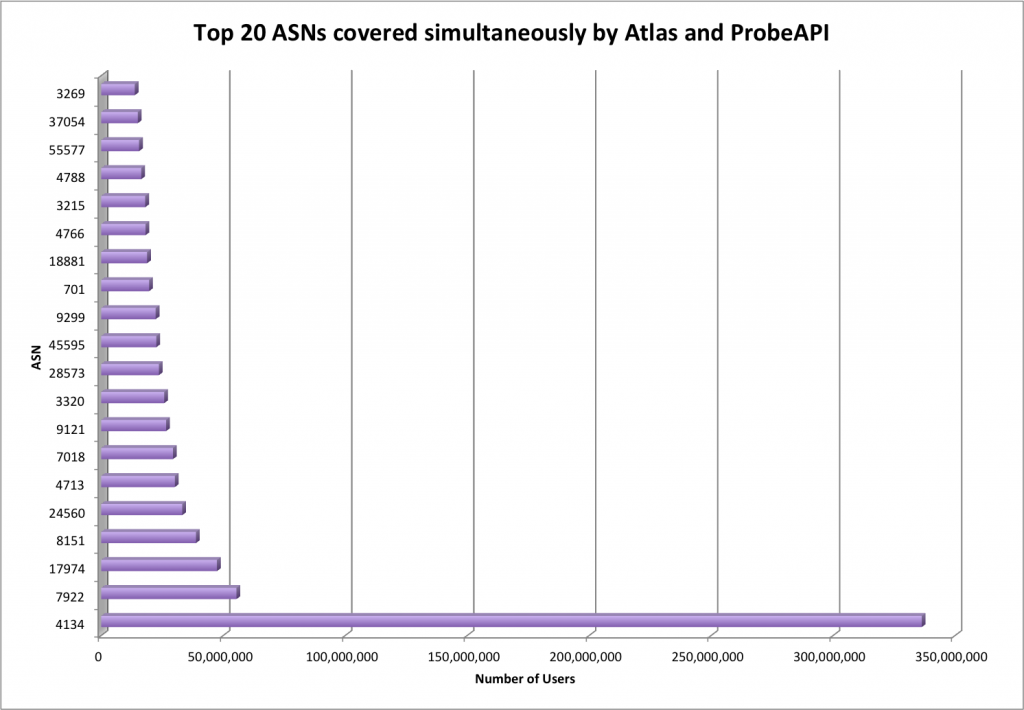
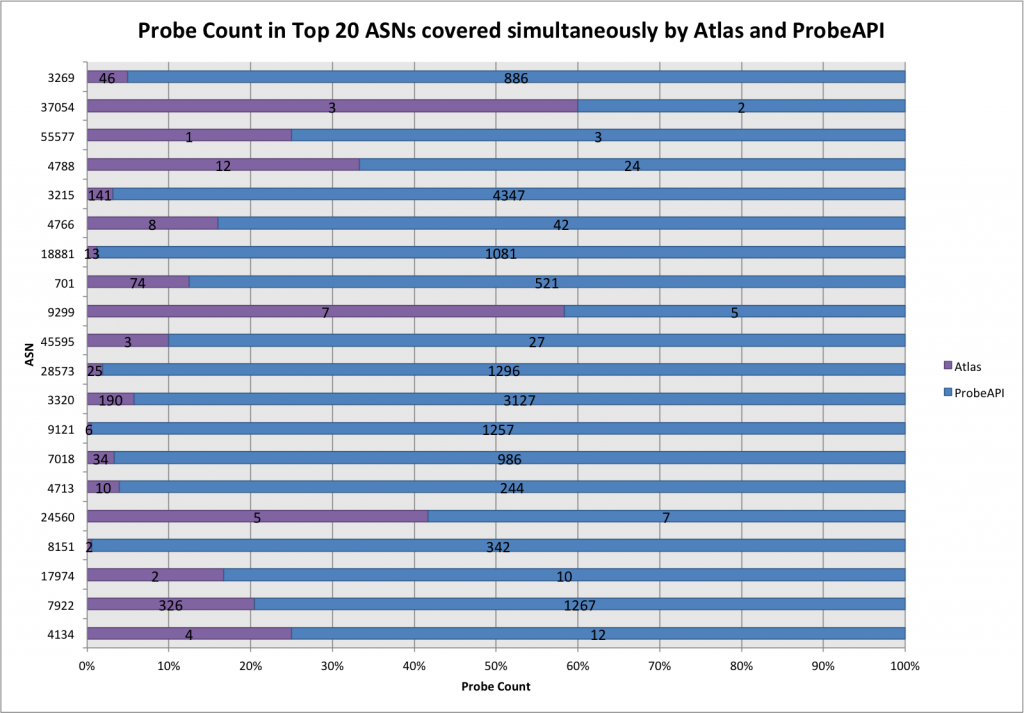
In this stage ProbeAPI’s end-user perspective can provide the convenient point of view of the last mile’s conditions. Combining the stability and precision of Atlas’ probes, with the massive amounts of possible measurements from end-user perspective, we can get a very well detailed portrait of the network’s condition.
Currently there are around 74000 active probes from ProbeAPI and Atlas monitoring the same ASs. ProbeAPI has around 14000 probes measuring networks where Atlas isn’t present. On the other side, Atlas has around 1700 probes where ProbeAPI is absent. Combined they give a grand total of around 95000 active probes able to measure networks serving almost 2.9 Billion users.
Conclusion
The software-based design of ProbeAPI helps us achieve a vast coverage, even achieving the impressive number of 4000+ available probes for a single AS. Of course, the natural instability of the probes is an inherent constraint of ProbeAPI’s architecture, but that is the trade-off in exchange for a very extended and fast growing measurement network.
On the other hand, RIPE Atlas is designed around physical devices installed in diverse locations by hosts. This physical design brings the inherent stability a physically independent device can provide. Probes can be placed strategically in different points of the net other than only end-users, where measurements can reveal valuable information about the net’s conditions. All This requires some host recruiting, so this distribution process is naturally slower than a software one.
There are essential architectural differences between ProbeAPI and RIPE Atlas. Both systems were designed with a similar set of measurement features in mind, but their differences in design end up opening different doors, which in return give us the possibility of observing the net from a large number of diverse vantage points.
